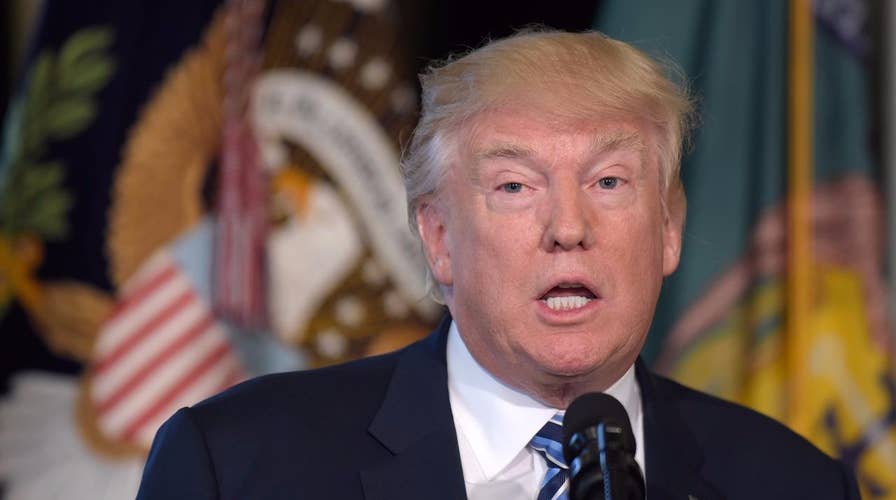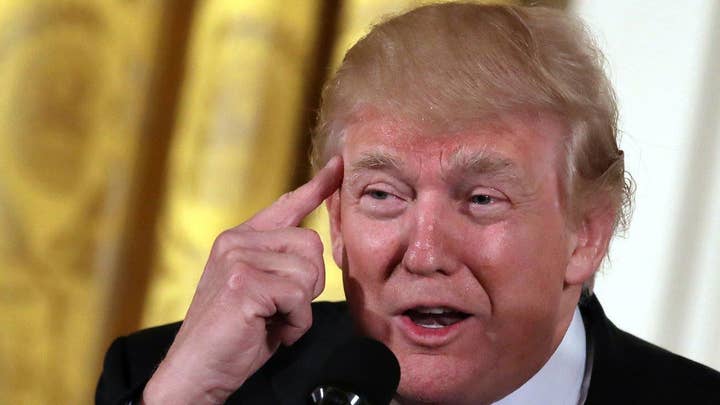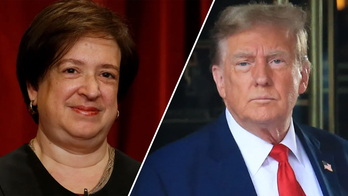Trump makes new push for Senate to scrap procedural rules
Joe Lestingi and Carrie Sheffield react to the White House's strategy towards Congress
As a gridlocked Congress threatens to stall the legislative promises that catapulted him to office, President Trump has raised hackles on the Hill by suggesting longstanding Senate rules simply be scrapped to cripple Democratic opposition.
Trump has twice in the past week railed against “archaic” Senate procedures – first in an interview with Fox News and then again on Twitter – seeming to suggest the legislative filibuster be ended to take advantage of Republicans’ control of Congress.
“And maybe at some point we're going to have to take those rules on, because, for the good of the nation, things are going to have to be different,” Trump said on “The First 100 Days” on Friday. “You can't go through a process like this. It's not fair. It forces you to make bad decisions. I mean, you're really forced into doing things that you would normally not do except for these archaic rules.”
In a pair of Tuesday tweets, Trump attributed the flaws in a spending bill panned by many conservatives to Democratic influence. Currently, Senate rules allow the minority party -- Democrats, at present – to subject a bill to a 60-vote test.
In modern terms, the minority party can "filibuster" by rallying more than 40 votes against a bill during this phase. There are currently 46 Democrats in the Senate, and two independents who caucus with the Democrats.
Trump’s solution: “Either elect more Republican Senators in 2018 or change the rules now to 51%.”
Separately, he told Fox News that “the filibuster concept is not a good concept to start off with.”
The idea of lowering the vote threshold for controversial legislation to 51 senators is groundshaking in the Senate, as it would sap power from the minority party; Republicans and Democrats typically trade that status every few cycles.
Most senators in both parties voiced opposition to Trump’s trial balloon, either reacting with alarm or brushing off the idea as nothing more than bluster.
Sen. Orrin Hatch, R-Utah, told CNN it would lead the U.S. “straight to socialism.” Senate Majority Leader Mitch McConnell, R-Ky., last month and again Tuesday said flatly the rules would not change.
But they have in the past.
It was only in 2013 that then-Senate Majority Leader Harry Reid triggered the so-called “nuclear option” to eliminate filibusters on most federal judicial nominees. That elimination of Senate precedent paved the way for McConnell to do the same for Supreme Court nominees in 2017, when Democrats threatened to hold up the nomination of Judge Neil Gorsuch.
Though McConnell insists the legislative filibuster is a different story, some of his colleagues aren’t so sure.
“I have seen the process deteriorate,” Sen. Ben Cardin, D-Md., said in April. “So do I believe Mitch McConnell would change the rules again? Yes.”
In fact, at least one Republican has expressed a willingness to go down that path.
"If Democratic senators continue to abuse the filibuster, I think the political pressure to rein in their abuse will only continue to grow," Sen. Ted Cruz, R-Texas, told Politico on Tuesday.
And while many opponents of nuking the legislative filibuster point to its historical importance – Sen. John McCain said Benjamin Franklin was “turning over” in his grave due to the current rhetoric – the actual history of filibusters shows rules that have been changed numerous times, and frequently inspired great frustrations for America’s leaders.
Whether or not the minority should have the ability to obstruct and delay votes has been a topic of debate from the earliest days of America, dating back to colonial assemblies and the Constitutional Convention. The Congress of the Confederation, the precursor to the U.S. Congress, in 1784 “recommended stringent rules to prevent delays,” according to former Sen. Robert Byrd’s history of the chamber “The Senate 1789-1989.”
The Senate in 1789 adopted a centuries-old British parliamentary rule allowing a member to make a motion “to move the previous question” – in other words, end debate and take a vote on the actual measure. The motion needed only to “pass in the affirmative,” not meet the higher voting standard in place today.
But the rule was done away with in 1806, a year after Vice President Aaron Burr urged its removal based on infrequent use.
That led to more than 100 years of a sometimes-congested Congress. Sens. Henry Clay, Stephen Douglas and Henry Cabot Lodge all tried at one point or another to reinstitute the rule, but all were ultimately beaten back.
“Of the two rights (of debating and voting) that of voting is the higher and more important,” Lodge wrote in 1893. “We ought to have both, and debate certainly in ample measure; but, if we are forced to choose between them, the right of action must prevail over the right of discussion. To vote without debating is perilous, but to debate and never vote is imbecile.”
The Democratic Party made “the prompt transaction” of Senate business an official part of its national platform in 1916 and 1920, Byrd noted in his book.
The cloture rule – Rule 22 – was introduced in 1917, requiring a two-thirds majority to end debate; however, that standard often proved difficult to attain. The threshold was altered in 1975 to its modern incarnation, requiring three-fifths of the Senate – or 60 members.
But now, in a rabidly partisan environment decades later, the mechanism for quickly proceeding from debate to a vote – and avoiding a filibuster – is once again being considered.
“I’ve said all along, come June, once ... regular legislation starts being passed by the House, there’s going to be a lot of frustration that the Senate can’t pass it, just regular pieces of legislation. Just anything requiring 60 votes,” Sen. Jeff Flake, R-Ariz., said Tuesday.
He said the base is already "noisy" about this but cautioned: “No, if you believe in limited government and extended debate, the 60-vote requirement is your friend more than it’s your foe. We won’t always be in this position – you’ve got to take the long view.”






